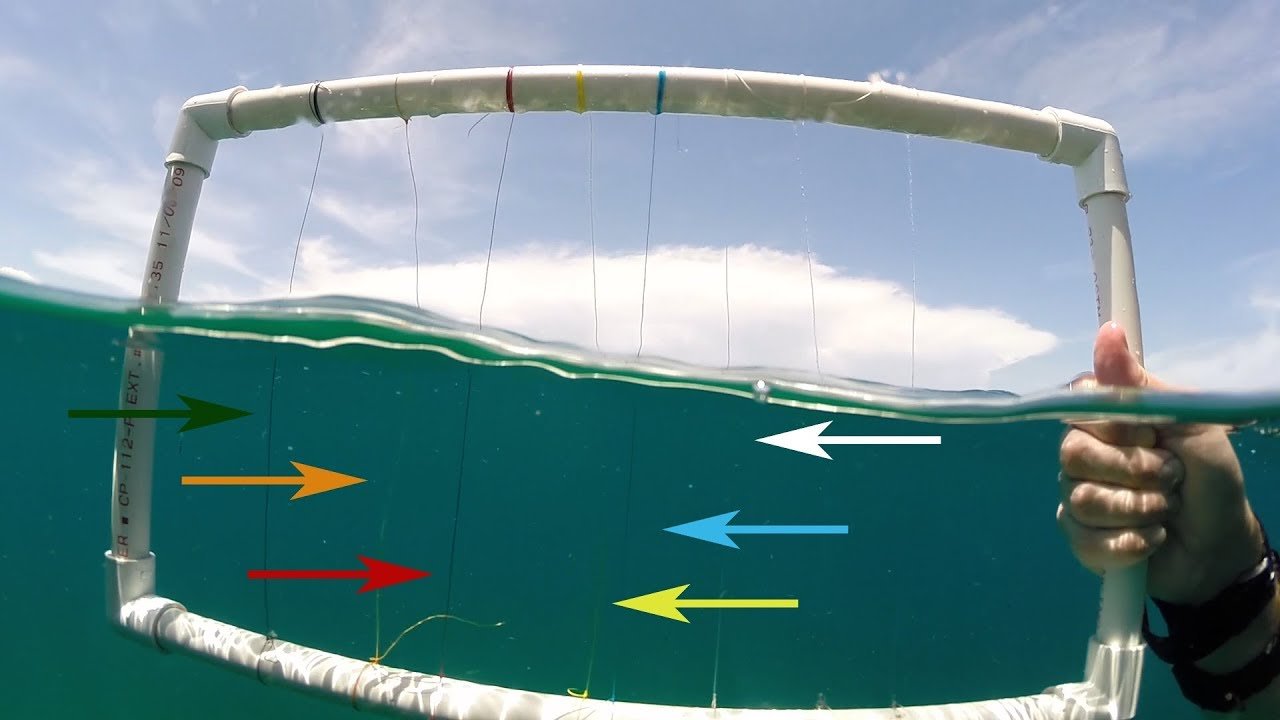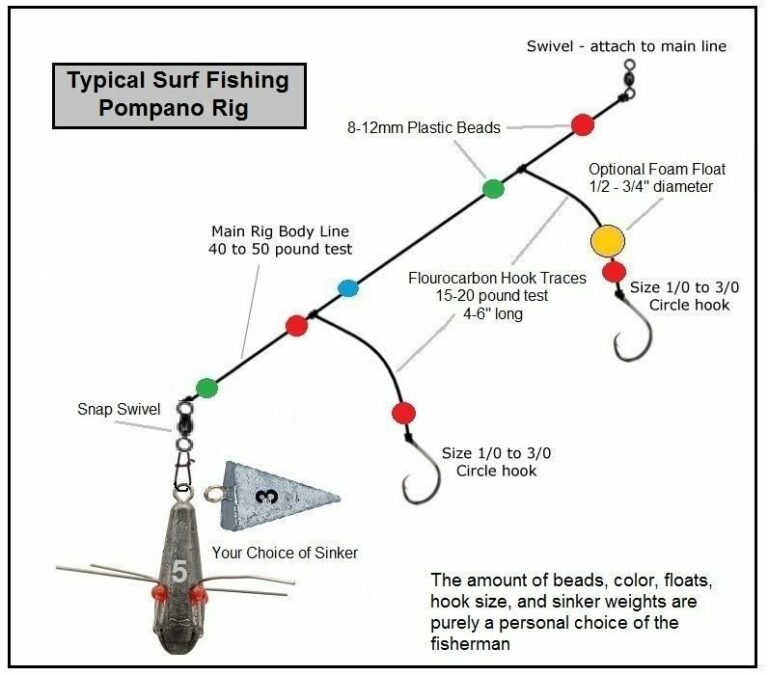The Best Saltwater Fishing Line Color: What Works?
Looking to catch more fish while saltwater fishing? Wondering what color line is best for saltwater fishing? Well, we’ve got you covered! In this article, we will delve into the fascinating world of fishing line colors and explore which one can give you an edge in your saltwater angling adventures. Whether you’re a seasoned angler or just starting out, choosing the right color line can make a significant difference in your success on the water. So, let’s dive in and uncover the secrets behind selecting the perfect color line for saltwater fishing.
What Color Line is Best for Saltwater Fishing?
When it comes to saltwater fishing, choosing the right fishing line is crucial for a successful and enjoyable fishing experience. One factor that often comes into play when selecting a fishing line is its color. While color may not seem like a significant aspect, it can make a difference in your saltwater fishing endeavors. In this article, we will explore the best color line for saltwater fishing and discuss its importance. We will also delve into other factors to consider when choosing a fishing line and provide some practical tips.
1. Importance of Line Color in Saltwater Fishing
The color of your fishing line can have a notable impact on your saltwater fishing outcomes. Here’s why:
Visibility
The visibility of your line in the water can determine how successful you are in fooling fish into biting your bait. Depending on various factors such as water clarity and light conditions, certain line colors may be more or less visible to fish.
Stealth
Saltwater fish can be particularly perceptive, especially in clear water. Choosing a line color that blends well with the water can make your presentation appear more natural and increase your chances of success.
Safety
In some situations, it’s important for other anglers, boaters, or even marine life to be able to see your fishing line. This can help prevent accidents or entanglements. Choosing a visible line color in such scenarios is crucial.
2. Factors to Consider when Choosing a Fishing Line Color
Now that we understand the importance of line color in saltwater fishing let’s explore some key factors to consider when making your decision:
Water Clarity
The clarity of the water you’ll be fishing in is a significant consideration. In clear water, choosing a line color that is less likely to be detected by fish can be beneficial. On the other hand, in murky or stained water, a more visible line can help fish locate your bait.
Light Conditions
The amount and type of light present in the fishing environment also play a role in line color selection. Bright, sunny days may call for a different line color compared to overcast or low-light conditions.
Target Species
Different species of saltwater fish have varying visual acuity and preferences. Researching the specific characteristics of your target species can help you choose the best line color to increase your chances of success.
Presentation Type
The type of fishing presentation you plan to use can also affect your line color choice. For instance, if you’re using topwater lures that create surface commotion, a high-visibility line can help you track and control your bait.
3. Recommended Line Colors for Saltwater Fishing
While personal preferences and fishing conditions can influence color selection, here are some commonly recommended line colors for saltwater fishing:
Clear/Transparent
Clear or transparent fishing lines are often preferred in situations where visibility is a concern. These lines are less likely to spook fish in clear water and can give your bait a more natural appearance.
Hi-Vis Yellow
Hi-Vis yellow lines are popular among saltwater anglers due to their high visibility. These lines are particularly useful when maximum visibility is required, such as when fishing in rough conditions or around heavy boat traffic.
Low-Vis Green
Low-Vis green lines are a versatile choice that works well in a variety of fishing situations. They blend well with both clear and murky waters, making them a popular option for many saltwater anglers.
Blue
Blue lines are designed to blend seamlessly with the color of the ocean. They are often used in offshore fishing scenarios where blending with the water is crucial to fooling fish.
Multicolor/Camo
Multicolor or camo lines combine different colors along their length, providing a good compromise between visibility and stealth. These lines are designed to break up your line’s appearance and make it less conspicuous to fish.
4. Practical Tips for Saltwater Fishing Line Selection
To help you make the best decision when selecting a fishing line color for saltwater fishing, here are some practical tips:
Experiment
Don’t be afraid to experiment with different line colors in various fishing situations. What works well in one scenario may not be as effective in another. Keep a selection of line colors on hand to adapt to changing conditions.
Observe Water Conditions
Take the time to observe the water conditions before deciding on a line color. Look for clarity, presence of underwater vegetation or structures, and visibility. These factors can help guide your choice.
Consider Line Alternatives
If you’re concerned about line visibility, consider using fluorocarbon or monofilament lines. These lines have different optical properties that can make them less visible underwater.
Consult Local Experts
When in doubt, consult local experts or fellow anglers who have experience fishing in your target location. They may have valuable insights and specific recommendations for line colors that work well in your area.
In conclusion, the color of your fishing line can play a significant role in your saltwater fishing success. By considering water clarity, light conditions, target species, and presentation type, you can make an informed decision when choosing a line color. Remember to experiment, observe water conditions, consider line alternatives, and seek advice from local experts. By doing so, you’ll be well-equipped to select the best color line for your saltwater fishing adventures.
What Is the Best Line For Saltwater Fishing?
Frequently Asked Questions
What color line is best for saltwater fishing?
1. Is it important to consider the color of the fishing line for saltwater fishing?
Yes, the color of the fishing line can play a significant role in saltwater fishing. The color selection depends on various factors, such as water conditions, target species, and fishing techniques.
2. Should I use a high-visibility line for saltwater fishing?
Using a high-visibility line is generally recommended for saltwater fishing because it allows you to detect subtle movements or bites easily. Fluorescent colors like yellow or chartreuse are popular choices for improved visibility.
3. Are there specific colors that work best in clear water for saltwater fishing?
In clear water, it is best to opt for a fishing line that matches the color of the surrounding environment. Using a clear or translucent line can be effective as it blends with the water, making it less visible to fish.
4. Which color line is ideal for fishing in murky or stained water in saltwater?
When fishing in murky or stained water, it is advisable to use a darker-colored line, such as green or blue. These colors provide better camouflage and make the line less noticeable to fish.
5. Is there a specific color line that works well for targeting specific saltwater species?
While there is no definitive answer as preferences can vary, many anglers use different colors to target specific species. For example, blue or clear lines are often favored for targeting pelagic fish, while red lines can attract certain bottom-dwelling species.
6. Does the color of the fishing line affect the fish’s behavior in saltwater?
The color of the fishing line itself does not significantly affect the fish’s behavior in saltwater. However, a highly visible line may make fish more cautious, especially in clear water, whereas a well-matched line color can offer better stealth and improve your chances of a successful catch.
7. Are there any specific color line recommendations for saltwater fly fishing?
For saltwater fly fishing, it is commonly suggested to use lines with a high-visibility color like yellow, orange, or contrasting combinations. These colors help anglers track the line’s movement in the water and detect subtle strikes from fish.
Final Thoughts
In conclusion, when it comes to selecting the best color line for saltwater fishing, there are several factors to consider. Firstly, the water conditions and clarity play a crucial role in determining the visibility of the line. Secondly, the target species and their behavior also influence the choice of line color. Additionally, personal preference and fishing technique should be taken into account. While there is no definitive answer to which color is the absolute best, experimenting with different options and considering the aforementioned factors can help anglers find the most suitable color line for their saltwater fishing needs. So, when asking “what color line is best for saltwater fishing,” it ultimately depends on a combination of variables unique to each angler’s fishing scenario.

